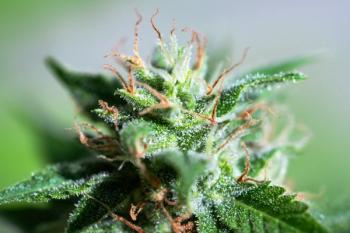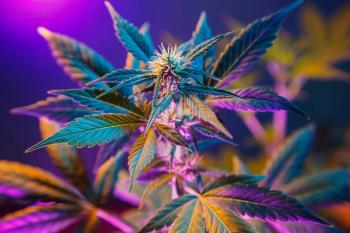
Cannabis Science and Technology
- May/June 2019
- Volume 2
- Issue 3
Beyond Potency: The Importance of Terpenes

There are thousands of other potential analytical targets in cannabis that are relatively unexplored. Here, the author examines terpenes.
Cannabis analysis over the past decade has progressed from non-existent idea to an evolving daily practice. The initial targets for analysis were the cannabinoids in order to determine the psychoactive compound concentrations in the cannabis products. Now, the field is expanding to encompass other important target compounds and elements. Certainly, compounds like pesticides and elements such as heavy metals are of particular importance to health and safety of consumer products. But, there are thousands of other potential analytical targets in cannabis which are still relatively unexplored. These compounds contribute to the health, nutritional, and more esoteric aspects of cannabis such as flavor, scent and overall composition.
Many chemical compounds can be responsible for scent and flavor in botanicals. Taste and smell are two of our primary sensory systems in which humans perceive the world. Both taste and smell are chemoreceptive senses meaning that there are specialized sensory receptor cells that convert a chemical substance to a signal such as neurotransmitter or an action potential in a nerve cell. There are two types of chemoreceptors: distance and direct. Distance chemoreceptors are present in the olfactory system (smell) and allow the detection of chemicals in a vapor or gaseous state. These receptors allow for the detection of odors and pheromones. Direct chemoreceptors are present in the gustatory system (taste).
Chemical compounds interact with chemoreceptors in the mouth or nose and create a response. In human beings, the tongue is the most important sensory organ for taste but there are chemoreceptors all over the mouth. Salivary glands in the mouth produce saliva, which is a chemical cocktail of water, electrolytes, cells and enzymes. The saliva is also a liquid or aqueous matrix for the food to interact with the taste buds as well as begin digestion of starches and fats. Without the assistance of saliva, the taste buds would not be able to chemically interact fully with the various flavors of food.
The chemoreceptors of the tongue and nose are primarily G protein-coupled receptors (GPCR). In addition to the GPCRs, the tongue also contains channels. GPCRs in the mouth are proteins that bind to ligands and begin signaling action potentials within the brain to differential between the three of the five basic tastes: sweet, bitter, and umami (savory). The taste of sour and salty are perceived through ion channels which are pores in membrane proteins that allow ions to pass into cells and through membranes. These chemoreceptors are located in taste buds around the mouth and on the tongue.
Each taste is triggered by different groups of compounds and different mechanisms of action. (See Table I). Sweet tastes are triggered by compounds such as carbohydrates and carbonyls activating GPCRs on the front section of the tongue, while salty tastes are triggered by alkali metals via ion channels set just behind the sweet areas of the tongue. These chemical reactions are transformed into neural impulses and travel along the various facial and major nerves to centers in the brain which then interpret the impulses and create taste perception. Impulses sent to the somatosensory and frontal cortex of the brain are perceived as a conscious understanding of taste, while impulses sent to the amygdala and hypothalamus perceive an emotional context of taste. Finally, the hippocampus gives us the memories of taste. These perceptions of taste along with the mouth feel of food or texture, the olfactory impulses associated with smell and the sensation associated with temperature, pain and pressure (chemesthesis) combine to create the impressions of flavor.
Chemicals which produce flavor or fragrance contain functional groups which activate the corresponding taste receptors to perceive taste which combine with the other senses to produce familiar flavors. The most common functional group in flavors is carbonyls such as esters, aldehydes and ketones, etc. Other groups which produce flavors are carbohydrates, acids, salts, proteins and terpenes (See Table III). Terpene is the common term for a large group of compounds that contribute to flavor and smell of botanical products. Isoprene or 2-methyl-1,3-butadiene (See Figure 1) and its polymers is the main base of natural rubber and the structural base for terpenes and terpenoids, even though isoprene is not part of the reactions which produce terpenes.
The actual mechanisms for the synthesis of terpenes are derived from units of isopentenyl pyrophosphate (Figure 2). The two metabolic pathways to synthesize terpenes are the Mevalonic acid pathway (MVA) or the MEP/DOXP pathway. The pathways are usually exclusive to the type of organism with green algae producing terpenes via the MEP pathway; humans and fungi via the MVA pathway and plants producing terpenes from both pathways (1). Terpenes and terpenoids can be subdivided into smaller groups by the number of carbon atoms or by the number of isoprene base units the compound contains (Table II).
Monoterpenes are lower-molecular-weight terpenes and are responsible for lighter floral fragrances. These lighter-weight terpenes can volatilize quickly after harvest and during processing involving heat and decarboxylation. Sesquiterpenes are larger-molecular-weight terpenes and have a heavier fragrance such as sandalwood or musk, volatilize at higher temperatures, and remain after many processing steps.
Many consumer products including perfume, flavorings, wine and beer are dependent upon terpenes for the character, flavor and fragrances they impart upon products. The floral notes of wine grapes can be traced back to terpenoids such as Damascene and Geraniol, which are also found in roses. The diversity of terpenes and terpenoids are recognized by all the range of scents and flavors they produce from the pine scent of pinene (the most widely encountered terpene in nature) to the lavender and mint notes associated with linalool. The flavor and aroma of hops are critical to beer, especially myrcene, β-pinene, β-caryophyllene, and alpha-humulene.
Many applications for the use of cannabinoids for health benefits have been published over the past decade. There have also been numerous publications of the health effects of various terpenes and terpenoids which suggest terpenes are often anti-inflammatories and anti-oxidants. (2,3). Cannabis is rich in both cannabinoids and terpenoids, which research suggests can have therapeutic and medical value. The most common terpenes found in cannabis variants are myrcene, caryophyllene and many others (see Table III). Current research is investigating the possible synergistic effects of cannabinoids and terpenes. It is often well-accepted that there are synergistic effects between bioactive compounds and nutrients in foods and supplements and not just a single compound (4). Research has suggested the presence of terpenes in cannabis products can alter the pharmacokinetics of cannabinoids (5,6). There are still questions being researched as to which cannabis product could contain these healthful or synergistic effects. The growing popularity of cannabis-derived products, especially the increasing popular vapes, are now bringing different groups and sources of terpenes into the cannabis world. In the world of cannabis products, terpenes within the product can be either cannabis-derived, other botanically derived, or artificial (synthetic). Products in which flavor and fragrance are heavily dependent, such as in vapes, concentrates and oils, some manufacturers will supplement or add other sources of terpenes to create a characteristic smell or taste especially when the extraction processes for some of these products can strip away many naturally-cannabis-derived compounds (7). As this process becomes more common for cannabis products the questions arise if the synthetic terpenes will have similar effects as the naturally-derived terpenes, and if the added compounds are safe. In a 2015 study of e-cigarette flavor and fragrance additives by Allen and colleagues, it was found some of the added compounds were changing during heating and vaporization into other harmful compounds (8).
Sample Processing and Analysis for Terpenes
As it was discussed in the last issue’s column regarding sampling and sample processing, cannabis products have a multitude of volatile compounds which must be retained during sample processing similar to the processing of economically valuable spices. Spices are another product high in aromatic compounds such as terpenes. Spices and cannabis can be degraded by high temperatures and oxidation. In ambient temperature spice grinding processes, heat and energy are generated which can raise the temperature of spices to almost 100 °C and cause loss of critical aromatic components up to 60% loss (9,10). Reduction of temperature during processing can prohibit the breakdown of volatile compounds. In one study it was found that cryogenic conditions showed better retention of monoterpenes (myrcene, limonene, and pinene) than grinding at ambient temperature. These monoterpenes are the same primary monoterpenes in many cannabis varieties (11,12).
The extraction and analysis of terpenes in the analytical laboratory from the various cannabis product matrices can be challenging especially in regards to sample preparation, clean-up and matrix effects. In many cases, related terpenes have the same or similar masses (Table III) making them difficult to identify in complex mixtures where many isomers or similar compounds are present. The most common method of analysis for terpenes is gas chromatography (GC) with either a flame ionization detector (FID) or mass spectrometer (MS).
The principles of gas chromatography are that samples are vaporized in an inlet at high temperatures of usually over 250 °C and transported via a carrier gas to a chemically infused column. The column material is composed of various chemical binding groups with interact with the vaporized analytes forcing the analytes out of the column phase over time and increasing temperature until the analytes are released into the carrier gas then the detector. The result is a chromatogram which displays graphical responses over time when each analyte is detected. Many GCMS column chemistries are based on boiling point or molecular size meaning that molecules of similar weight or similar boiling points could co-elute or appear overlapped in the chromatogram. It is this fact which can make the analysis of terpenes challenging since many terpenes have the same molecular weight and formula and relatively low boiling points which mean they appear very quickly in the chromatogram and often co-elute (Table III). Instrument and column manufacturers over the decades have become the experts on the separation of compounds and have given analytical labs many methods and specialized columns to aid in analysis.
Terpene analysis has always been an important component of many research areas including atmospheric chemistry, agricultural science, biochemistry, and environmental science to name a few. In industries dependent upon flavor and fragrance products, terpene profiles are part of their routine analytical testing procedures. The cannabis industry is just the newest industry to investigate the role of terpenes for flavor, fragrance and health benefits. As the industry continues to engineer cannabis strains to enhance specific chemical profiles, the importance of terpenes will increase.
References
- https://en.wikipedia.org/w/index.php?title=Terpeneoldid=889655678.text_4_reference_(2019)
- http://www.internationalhempassociation.org/jiha/jiha4208.html.text_4_reference_ (2019).
- T. Nuutinen, European Journal of Medicinal Chemistry 157(5 September 2018), 198–228 (2018).
- R.H. Liu, Advances in Nutrition 4(3), 384S-392S (2013).
- J.M. McPartland, and E.B. Russo, Journal of Cannabis Therapeutics 1(3–4), 103–32 (2001).
- E.B. Russo, British Journal of Pharmacology 163(7), 1344–64 (2011).
- B. Weinberg, Cannabis Now,
https://cannabisnow.com/synthetic-terpenes/ (2018). - J.G. Allen, S.S. Flanigan, M. LeBlanc, J. Vallarino, P. MacNaughton, J.H. Stewart, and D.C. Christiani, Environmental Health Perspectives 124(6), 733–39 (2016).
- K.K. Singh, and T.K. Goswami, Journal of Food Engineering 39(4), 359–68 (1999).
- S. Saxena, Y. Sharma, S.S. Rathore, K. Singh, P. Barnwal, R. Saxena, P. Upadhyaya, M.M. Anwer, Journal of Food Science and Technology, 52 (January 1), 568-573 (2015).
- S.M. Mathew, and V.V. Sreenarayanan, J. Spices Aromatic Crops 16(2), 82-87 (2007).
- C.T. Murphy, and S. Bhattacharya, Journal of Food Engineering, 85(1), 18-28 (2008).
About the Columnist
Patricia Atkins is a Senior Applications Scientist with SPEX CertiPrep and a member of both the AOAC and ASTM committees for cannabis.
How to Cite This Article
P. Atkins, Cannabis Science and Technology 2(3), 22-27 (2019)
Articles in this issue
over 6 years ago
How ERP Solutions Support Accountability in Cannabis Businessesover 6 years ago
Regulation Nationover 6 years ago
Understanding the Science of Cannabis Product Developmentover 6 years ago
Inter-Lab Variation in the Cannabis Industry, Part II: SolutionsNewsletter
Unlock the latest breakthroughs in cannabis science—subscribe now to get expert insights, research, and industry updates delivered to your inbox.





